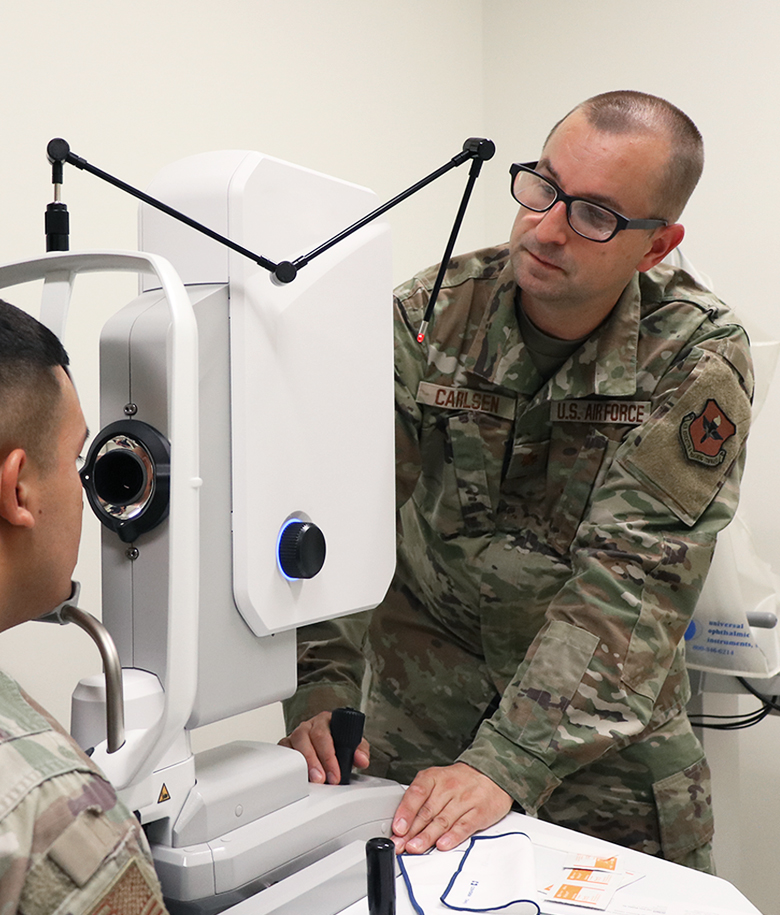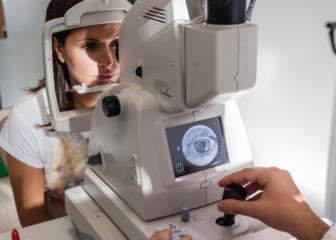Why Selecting an Eye Doctor Optometrist is Essential for Your Eyes
Wiki Article
Discovering the Newest Technological Improvements in Optometry and What They Mean for Optometrists
In the ever-evolving field of optometry, recent technical advancements are reshaping how practitioners approach eye care. From the accuracy of Optical Comprehensibility Tomography to the nuanced understandings supplied by AI-driven diagnostic tools, these innovations are establishing new requirements in client assessment and treatment. Teleoptometry is poised to redefine ease of access, guaranteeing that know-how goes beyond geographical limitations. As these innovations penetrate the practice, eye doctors are encountered with the obstacle of welcoming these tools to improve patient end results. The question remains: exactly how will these technological shifts redefine the duties and responsibilities within the career?Innovations in Diagnostic Devices
Advancing the area of optometry, developments in analysis tools have actually reinvented the means eye treatment experts evaluate and diagnose aesthetic problems and eye conditions. The previous years has actually observed considerable technical advancements, allowing more detailed and accurate examinations.One more trick development is the introduction of innovative corneal topography systems, which map the surface area curvature of the cornea with accuracy. These devices are specifically helpful for suitable call lenses and diagnosing corneal disorders. In addition, electronic retinal imaging has actually transformed traditional ophthalmoscopy, offering in-depth, panoramic sights of the retina that facilitate detailed visual assessments.
The development of wavefront aberrometry has actually likewise been vital, making it possible for the evaluation of refractive mistakes with unparalleled precision (Optometrist Chino). This innovation aids in customizing corrective lenses and enhancing medical outcomes for refractive surgical treatments. Collectively, these diagnostic developments empower eye doctors to deliver superior individual care, making sure early intervention and tailored treatment approaches, ultimately enhancing visual health and wellness end results
AI in Patient Monitoring
Structure on the structure of innovative analysis devices, the incorporation of expert system (AI) in person administration represents a transformative leap for optometry. AI systems are progressively employed to improve performance, precision, and personalization in patient care. By examining substantial amounts of information, AI can determine patterns and forecast possible eye conditions, allowing optometrists to tailor interventions a lot more successfully. This ability is important in handling chronic eye conditions such as glaucoma and diabetic retinopathy, where very early detection and continuous monitoring are vital.Additionally, AI-driven systems help with structured patient interactions and administrative procedures. Automated organizing, digital examinations, and individualized follow-up strategies not just enhance individual fulfillment however likewise maximize time administration for professionals. These systems can triage people based on the necessity of their conditions, making sure that those in critical requirement get punctual interest.
In addition, AI enhances decision-making by offering eye doctors with evidence-based referrals and treatment paths. By integrating information from digital health and wellness documents, AI tools supply insights that notify medical decisions, lowering the risk of mistakes and improving individual end results. As AI remains to evolve, its role in client administration will likely broaden, improving the landscape of optometric treatment.
Advances in Retinal Imaging
In the realm of optometry, retinal imaging has actually experienced remarkable technical advancements that are enhancing analysis capacities and individual treatment. Technologies such as Optical Comprehensibility Tomography (OCT) and fundus digital photography have actually transformed exactly how optometrists analyze the retina and envision. OCT, specifically, gives high-resolution, cross-sectional pictures of the retina, enabling the detailed examination of its layers. This capacity is indispensable for early detection and management of problems like glaucoma, diabetic person retinopathy, and age-related macular deterioration.Improved imaging methods like OCT angiography are additional refining diagnostic accuracy. Opticore Optometry. Such developments promote the identification of minute retinal adjustments that could symbolize disease development.
In addition, developments in fabricated intelligence are boosting retinal imaging by allowing computerized evaluation of large datasets. These systems aid optometrists in determining patterns a measure of pathology, thereby improving analysis accuracy and efficiency. Collectively, these advancements are transforming retinal imaging into a foundation of modern-day eye care, boosting end results and increasing therapeutic opportunities.
Teleoptometry's Expanding Role
Teleoptometry is significantly ending up being an essential element of eye care, driven by developments in data and analysis tools. As optometry accepts electronic makeover, teleoptometry assists in remote appointments, permitting eye doctors to extend their services beyond typical boundaries. This is particularly helpful in country and underserved areas where access to specialized eye treatment is commonly restricted. By leveraging high-resolution video conferencing and progressed retinal imaging, eye doctors can carry out extensive eye exams from afar, making sure prompt diagnosis and Your Domain Name treatment.The integration of artificial knowledge (AI) additional enhances teleoptometry, enabling the evaluation of visual information and assisting in the detection of eye conditions such as glaucoma and diabetic person retinopathy. AI-powered algorithms can rapidly analyze complicated imaging information, offering eye doctors with useful insights that strengthen medical decision-making.
Moreover, teleoptometry sustains continuity of treatment through smooth integration with digital wellness records (EHRs), permitting optometrists to preserve comprehensive patient backgrounds. This ensures that individuals receive personalized and constant care also when speaking with different experts.
In spite of these benefits, challenges stay, consisting of ensuring information safety and security and handling person expectations. Teleoptometry represents a considerable stride in the direction of even more obtainable, efficient, and patient-centered eye care. As modern technology develops, its function is positioned to broaden additionally.

Future Trends in Eye Care
A myriad of ingenious patterns is readied to improve the future of eye treatment, driven by technical innovations and the evolving demands of people. One substantial fad is the assimilation of artificial intelligence (AI) in diagnostics, which promises to boost the accuracy and efficiency of eye exams. AI formulas can examine large quantities of information from retinal photos, potentially finding problems like diabetic person retinopathy and glaucoma earlier than standard techniques.Furthermore, customized medicine is gaining traction in optometry, with hereditary testing notifying customized therapy plans. This approach aims to optimize individual end results by customizing interventions to individual hereditary accounts. Wearable modern technology, such as wise contact lenses, is additionally imminent, supplying real-time tracking of intraocular pressure or sugar levels, hence giving constant understandings into ocular and systemic health and wellness.
The adoption of enhanced fact (AR) and digital fact (VIRTUAL REALITY) in training and client education is another arising pattern. These innovations supply immersive experiences that can improve understanding and skills both for optometrists and patients. As these trends progress, eye doctors should stay abreast of technical developments to give sophisticated treatment, making certain improved person outcomes and complete satisfaction in the dynamic landscape of eye treatment.
Final Thought

Collectively, these diagnostic advancements encourage eye doctors to provide superior individual treatment, making certain very early intervention and tailored therapy approaches, eventually improving aesthetic health and wellness outcomes.

As these modern technologies proceed to develop, eye doctors must adapt and integrate them into method, inevitably optimizing process performance and boosting the criterion of eye care provided to individuals.
Report this wiki page